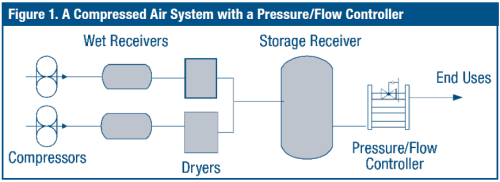Preventive Maintenance Strategies for Compressed Air Systems
A brewery neglected to perform routine maintenance on its compressed air system for years. As a result, two of its centrifugal compressors, whose impellers had been rubbing against their shrouds, were unable to deliver the volume of air they were rated for and one of those units had burned up several motors during its lifetime. In addition, plant personnel did not inspect the system’s condensate traps regularly. These traps were of a type that clogged easily, which prevented the removal of moisture and affected product quality. Also, the condensate drains were set to operate under the highest humidity conditions, so they would actuate frequently, which increased the system’s air demand. As a result, energy use was excessively high, equipment repair and replacement costs were incurred unnecessarily, and product quality suffered. All of this could have been avoided through regular maintenance. Like all electro-mechanical equipment, industrial compressed air systems require periodic mai


